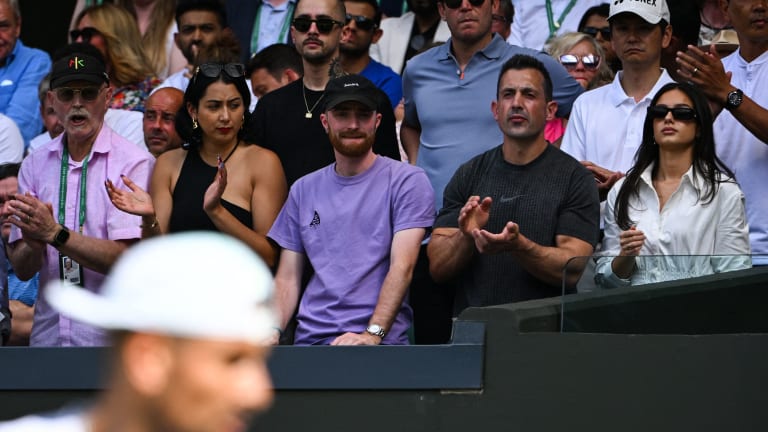Coaches Corner
Open Mic: On-court coaching seamlessly integrates into tennis landscape in 2022
By Sep 28, 2022Coaches Corner
Gored by Novak: what explains Djokovic’s surprising coaching split from Ivanisevic?
By Mar 28, 2024Coaches Corner
Maria Sakkari announces split from longtime coach Tom Hill after Doha exit
By Feb 15, 2024Coaches Corner
Holger Rune brings on Boris Becker as coach for remainder of 2023 season
By Oct 19, 2023Coaches Corner
Coach Wim Fissette ends collaboration with Zheng Qinwen amid rumored reunion with Naomi Osaka
By Sep 29, 2023Coaches Corner
Tennis.com Podcast: Coach Rob Steckley seizes the moment, one opportunity at a time
By May 21, 2023Coaches Corner
Dominic Thiem parts with coach Nicolas Massu, salutes ‘incredible journey’ on social media
By Apr 09, 2023Coaches Corner
Emma Raducanu reportedly takes on Sebastian Sachs as new coach
By Dec 17, 2022Coaches Corner
Serena's former coach Patrick Mouratoglou to work with Holger Rune
By Oct 12, 2022Coaches Corner
Emma Raducanu splits with coach Dmitry Tursunov, brings on fitness trainer Jez Green
By Oct 11, 2022Coaches Corner
Open Mic: On-court coaching seamlessly integrates into tennis landscape in 2022
Tennis quietly ended its age-old rule against on-court coaching this summer. The change comes at a cost, but the upside is worth it.
Published Sep 28, 2022
Advertising
Advertising

Restricted to generic cheers at Wimbledon, Team Kyrgios was able to deliver more precise advice to the Aussie at the US Open; did they take advantage?
© AFP via Getty Images